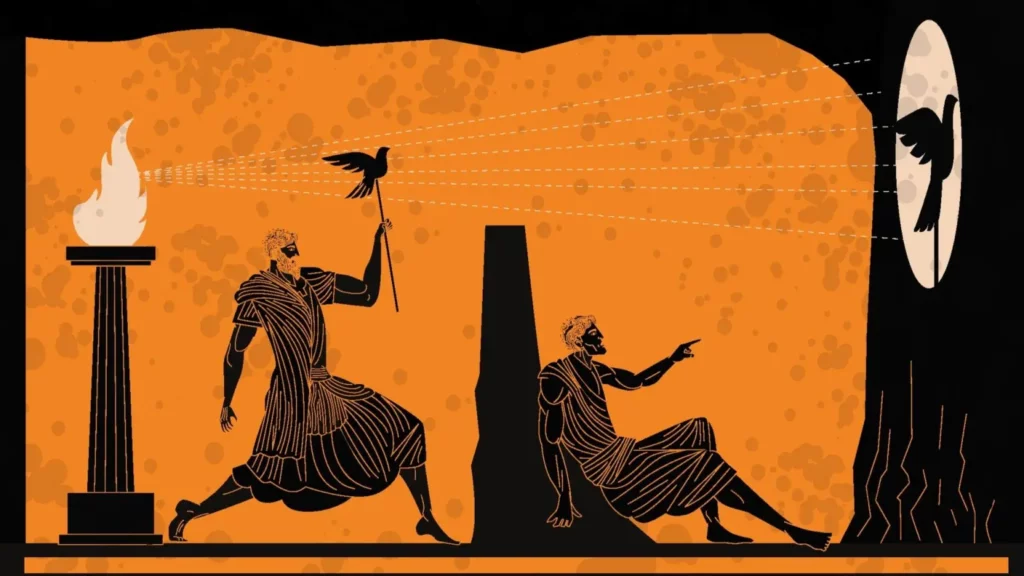In one of his most famous dialogues, the Republic, Plato narrates one of the most famous myths in the history of philosophy, the so-called “myth of the cave”.
The story tells of a group of slaves chained in a cave, in the dark, facing a wall on which shadows are projected produced by figures that pass behind the observers, illuminated by a brazier. A slave, freed from his chains, leaves the cave and contemplates, for the first time, the world in which he finds himself and the light of the sun; once exposed to the sunlight, the slave struggles to adapt to the strong natural light and is frightened by what he sees. Returning to the cave, he tells what he has seen to the other slaves, who, not believing him, kill him.
Well, more or less I had that feeling when I returned to Italy to work after having spent two years in London and worked for a multinational company.
This is not to denigrate Italian companies, medium, small and large, and label them as cavemen. On the contrary, Plato's myth of the cave refers to each of us and describes the state of absolute ignorance of a certain reality.
It is difficult to imagine a reality of which we have no knowledge.
It is much easier to think of a possible evolution of something already partially known. Let's think for example of artificial intelligence: it is easy today to imagine that in a few years we will have virtual assistants who will write emails for us or book appointments for us at the restaurant, nothing easier to imagine. This is possible because we already have a good part of the cognitive elements to imagine it. In fact we hear about AI every day and we have probably already tried something similar even if it does not work perfectly.
Now try to imagine a Quantum Computer. How does it work? What does it do? Can you create a picture in your head of how it works? Maybe yes if you are familiar with the subject, maybe not.
Let's try with which managerial concept.
Try to imagine a “guideline”. A guideline is a management tool for efficiently organizing the activities of company personnel. Can you imagine it?
Now try to imagine the “business objectives”. Can you define 3 business objectives for the current year? One could be the financial performance objective containing Revenue and Profitability; the other two could be organizational or social responsibility objectives. Can you imagine them? Probably yes, and in this paragraph you already have some elements that help you.
Now, try to imagine that every employee in your company has goals to achieve during the year, OK? And that those goals must be derived from the 3 company goals. So the personal goals are derived and aligned with the company goals and all the employees work in that direction. Isn't it all extremely coherent, logical and, if you like, simple?
Were you able to imagine all this before reading it? This is the first point of Plato's myth of the cave. But it doesn't end there:
The points of the myth are at least 3:
- One cannot imagine what one has no knowledge of;
- Once exposed to the new situation one feels discomfort and suffering;
- When you try to explain what you have seen to someone who hasn't seen it you will encounter rejection, denial and dismissal.
At this point you can easily imagine yourself in any situation where you were asked to do something new or in a different way than you did it before. I personally had this experience when I started working with the waterfall Project Management methodology. For the realization of a Knowledge Management project I had to work for a week with a colleague who was an expert in project management with whom we had to plan the entire project in detail before we could actually start working on it.
It was a very instructive experience because I learned the planning methodology that I have never abandoned, but at the same time it was a week of headaches.
Because those who have not left the cave reject the new reality
This is certainly the most interesting step to explore in terms of corporate organizational behavior because it concerns all companies. The theme of change management for example, it is placed in this phase of the company's life. In the case of change management, there is an awareness on the part of someone at the top of the company that a change is necessary in the company. It can be a technological change or a process change, but it is always a strong change that is often initially rejected or hindered by the company's personnel.
In this case, the top management is “the slave freed from the chains who came out of the cave” and the chained slaves are the company staff who are tied to old work habits.
What happens when you hire people with backgrounds that are different from your current company culture.
When a new employee or collaborator joins a company bringing with them new or different experiences from the company's organizational habits or culture, a collision is created. The new organizational practices, theoretically more efficient or high-performing, clash with the practices in place in the company and it is necessary to decide whether to adopt the new practices, therefore marry the change or reject the new practices and keep the old ones.
Given evidence that new practices can improve both processes and the experience of those who adopt them, new practices may be adopted but with some reservations or limitations. For example, only those new practices that are deemed necessary may be adopted, while others will be rejected.
